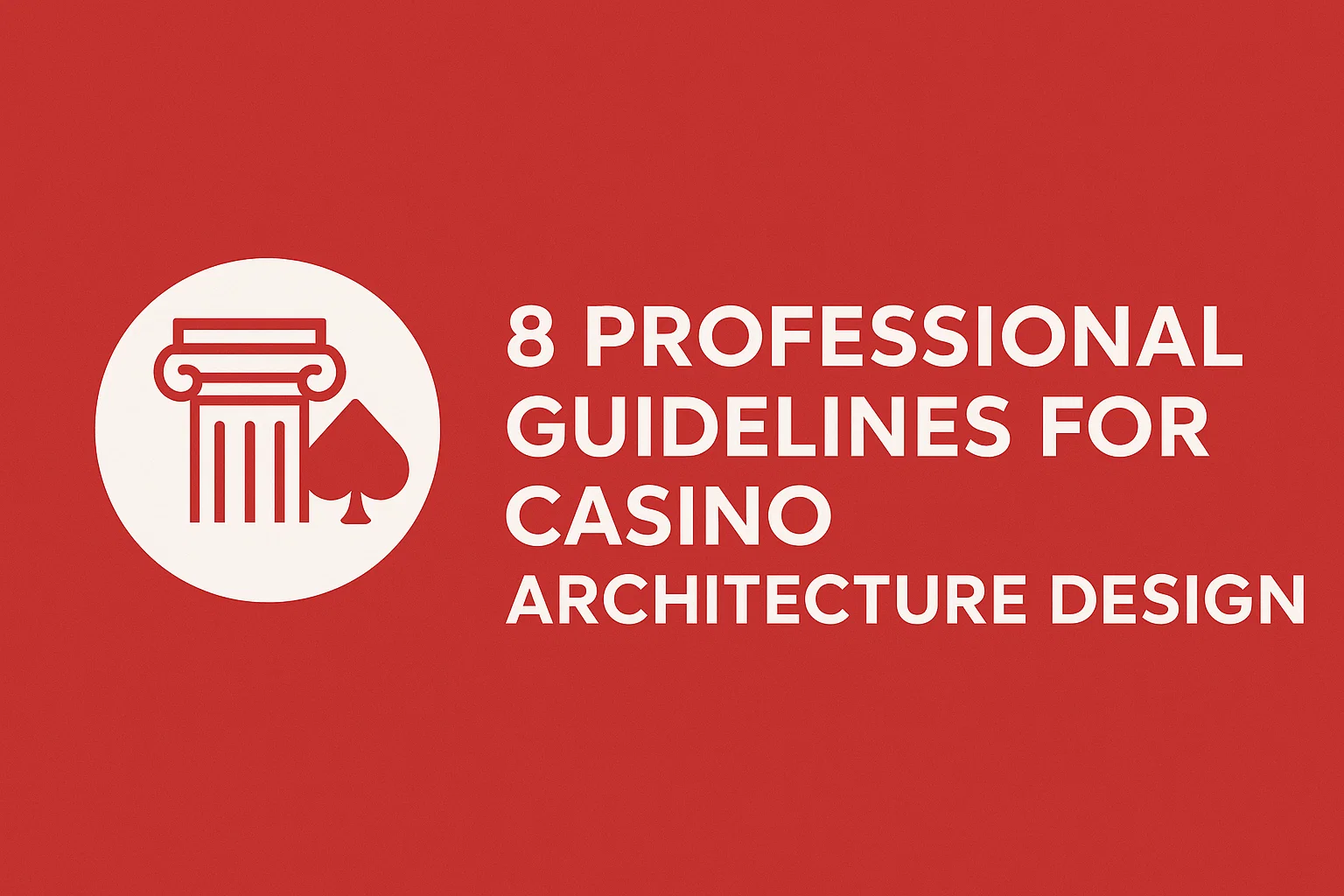
Casinos rely on their patrons to bring in revenue, but it would not be equitable to confine the revenue generating capacity to their core business. Operating costs are also a vital element. With casinos being such huge users of power, the owners made certain maintaining those expenses under check was a priority.
Continue reading this article to discover how you can design a casino, such as https://norskenettcasino.biz/, that meets your client's goal of making more money from visitors and lowering operating costs.
8 Features of Revenue-Based Casino Architecture Design
Keeping Visitors
The reasoning behind each of these recommendations is to encourage visitors to remain longer in the casino and, as a result, spend more money inside the casino.
1. Build Windowless Walls
The idea of windowless walls -- and no clocks -- is to retard the customers' sense of time. The motivation for this common casino design element is to keep casino gamblers confined and not allow them to depart by fearing being late.
2. Imagine Maze-Like Layouts
Casinos should not be easy to exit. Instead, casino designers should try to keep players inside the building by enabling them to venture out into new games and activities. You can even 'pad' games, bars, and other 'obstacles' to the exit.
3. Make Patrons Comfortable
You should incorporate dining rooms and bars into your casino design. These are usually an experience that is a must-have and are important in keeping patrons inside the building.
You can add, if necessary, designated smoking (or smoke-free) areas as well -- casinos receive as many as 50 million non-smoking guests per year.
Your casino must also provide excellent indoor air quality (IAQ) to your guests. From the design standpoint, this means integrating an HVAC (i.e., heating, ventilation, and air conditioning) with a widely dispersed duct system.
First, your air-conditioning system must be effective at exchanging enormous volumes of contaminated air with freshly conditioned air on a rigorous and frequent basis.
Second, customers should also be comfortable in terms of cooling and heating. You can achieve this by placing HVAC air diffusers to the floor, i.e., closest to the customer. However, for you to perform this, you need an underfloor air distribution (UFAD)-based HVAC.
4. Employ Raised Access Floors
- A raised access floor system is a false floor that you suspend above the actual floor/ground.
- The intention is to make use of the space between the real and false floors -- i.e., the plenum -- to house fiber-optic cable, electrical cabling, plumbing, and other MEP assets.
- With raised access floors, you will be able to free up significant floor space, which you can use for lounges, dining areas, bars, and other facilities.
You can even utilize raised access floors to future-proof the casino, for example, cable the fiber-optic cables in such a way that you can add new IP-based gaming machines.
Last but not least, raised access floors are necessary for UFAD-based HVAC. You would make use of the plenum to house your HVAC's ductwork, air diffusers, and trench heating units.
5. Make It Easy for Patrons to Find the Games, Food & Beverages
This section is the continuation of our third point i.e., keeping patrons comfortable, yet also a design feature in its own right. Having dining areas et. al. within the casino is half the battle; you must position them at such points where patrons can reach them easily.
An article by Casino Journal noted the following:
A successful guest experience requires that customers can easily find a favorite slot or table game, and readily acquire a much-needed drink or snack.
You can mirror the approach that Wild Horse Pass took by putting its game floor in the center so that the amenities encircle the players. Raised access flooring will help make this easy to do by enabling you to distribute the MEP systems to any portion of the floor.
Efficiency-Oriented Design Tips
Up to now we had been examining casino architectural design elements that attract or keep visitors; yet, casinos must also have low life-cycle costs.
6. Support Your Employees
Your design for your casino must allow for quite easy mobility and work in the building for staff members.
The Casino Journal pointed out how Walt Disney Parks and Resorts led the way by establishing "utility tunnels [that] enable employees to move freely and unobtrusively throughout the work environment" and, in so doing, enhance levels of productivity without negatively affecting the guest experience.
7. Choose Hard-Wearing Materials
The constant replacement of finishes or the rehabilitation of building systems such as HVAC will add to the lifecycle cost of running the casino. However, encouraging investment in quality materials initially would not only save on such expenses (i.e., provide positive ROI) but could also result in obtaining a LEED certification by making the building more green friendly and thus contribute to the environment.
8. Save Electricity
In most building types, the HVAC system consumes the largest amount of electricity (39%), lighting (25%) and equipment (22%). It goes without saying that a casino design that burns less electricity in each of these areas will be a master at saving on energy costs.
You can lower HVAC operating costs by up to 30% by including an UFAD-based system in your casino design. You can lower lighting costs by having all lighting uses utilize LED light bulbs.
Whether casinos or other buildings, MEP systems, especially HVAC, are monumental engineering issues. Getting hung up trying to find the "correct" MEP infrastructure will delay your project and make you spend more money than you had hoped to. You can skip that by having professionals in each department.

